SECTION I
TIME: 60 MINUTES
80 MULTIPLE-CHOICE QUESTIONS
DIRECTIONS: Answer the multiple-choice questions below. Some are based on images. In this book the illustrations are at the top of each set of questions. Select the multiple-choice response that best completes each statement or question. You will have 60 minutes to answer the multiple-choice questions.
Questions 1–3 are based on Figure 1.

Figure 1
1.Michel Tuffery’s reuse of existing materials draws inspiration from repurposed materials as seen in
(A)the Kaaba
(B)the Golden Stool
(C)Duchamp’s Fountain
(D)the Intihuatana Stone
2.Michel Tuffery’s sculpture is made of used cans of corned beef which symbolize
(A)a rejection of a strict vegetarian lifestyle
(B)the reliance on packaged meat rather than traditional food gathering activities
(C)Polynesian traditional welcoming of new people and products
(D)an affirmation of a meat-based diet
3.Michel Tuffery’s objects become animated
(A)when used in traditional coming-of-age ceremonies
(B)when put on wheels and used as part of a multimedia performance art
(C)when lit up from within and resembling an active bull
(D)in cartoons and used to entertain children
Questions 4–7 are based on Figure 2.
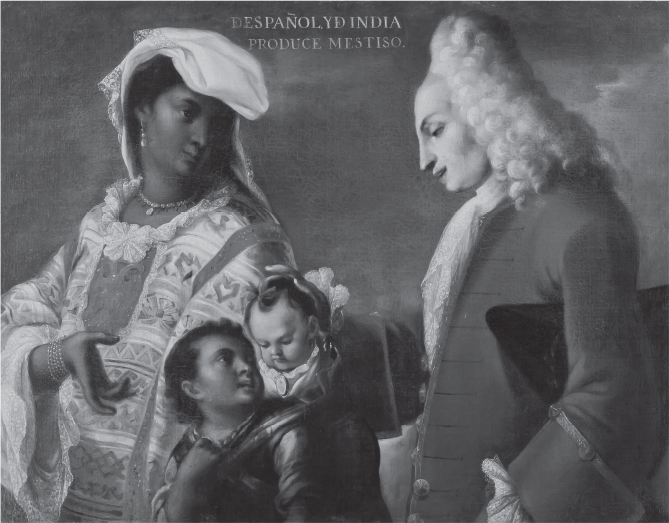
Figure 2
4.Works like this from New Spain betray a knowledge of European artistic traditions during which of the following periods?
(A)Renaissance
(B)Baroque
(C)Gothic
(D)Neoclassicism
5.This work presents a contrast in cultural identities. The figure on the right represents
(A)the King of Spain and his generous actions toward his subjects
(B)a member of the Spanish priesthood blessing a young child
(C)a member of the Spanish aristocracy who cares for children who are born on his land
(D)a member of the upper classes who has had a child with a Native American woman
6.The work is called a casta painting, a term that implies that
(A)it is meant to show how children of mixed race need adoption
(B)its purpose is to introduce the notion of mixed races to a European audience
(C)it is a painting in a series of works that shows different levels of ancestry and hierarchy
(D)it was used as a screen to divide rooms from one another
7.The woman on the left represents a Native American
(A)but she is painted as a European woman with dark-colored skin
(B)who is dressed as a European woman of the eighteenth century would be dressed
(C)who tries to adopt the culture and conditions of her new home in Spain
(D)who is eager to give up her children to the European male in the painting
Questions 8–12 are based on Figure 3.
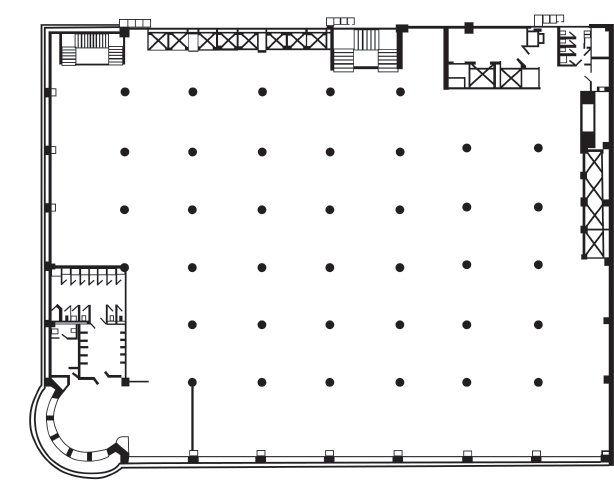
Figure 3
8.By examining this ground plan we can determine that the building represents a
(A)mosque
(B)cathedral
(C)department store
(D)home
9.It was likely this building used which of the following architectural systems?
(A)Groin vaults
(B)Skeletal structure
(C)Cantilevering
(D)Fan vaults
10.The interior resembles the ground plan of
(A)the mosque at Córdoba
(B)the Parthenon
(C)the Temple of Minerva
(D)the Great Stupa
11.When walking into this building the viewer is greeted by
(A)a central open nave
(B)flights of stairs
(C)an atrium surrounded by glass
(D)a myriad of columns
12.The ground plan indicates that the building
(A)faced Mecca
(B)was oriented toward the sun
(C)has long banks of windows so people can see in
(D)was aligned for a ceremonial purpose
Questions 13–16 are based on Figures 4 and 5.
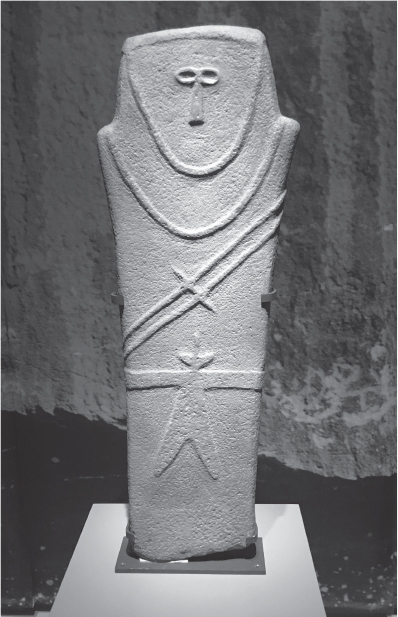
Figure 4
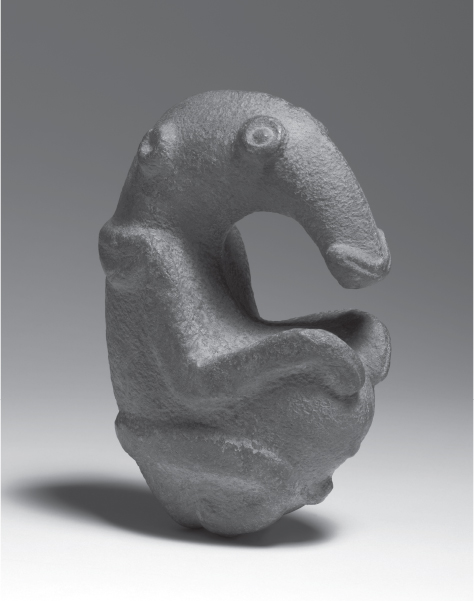
Figure 5
13.The work on the left has been anthropomorphized, meaning that
(A)it was discovered by anthropologists
(B)it is a work depicting a woman
(C)it has characteristics of a human, but is not human itself
(D)archaeology has yet to determine what this is
14.The work on the right, called the Ambum Stone, was carved in stone by artists who
(A)used another stone to carve with
(B)specialized in metalwork
(C)used the repoussé technique
(D)used hard-edged ceramics to smooth the stone surface
15.The work on the right has many theories surrounding its use. Among them is the hypothesis that it represents
(A)a ceremonial animal that humans created in order to sacrifice
(B)an anteater in a fetal position
(C)a stylized kangaroo with a pouch ready for a newborn
(D)a fish used to bait other fish
16.They are both stylized, which means they
(A)are in the contemporary style
(B)have later been recognized as part of a style
(C)are schematic and represent the natural world in a nonrealistic way
(D)are done in different parts of the world but are in the same style
Questions 17–20 are based on Figures 6 and 7.
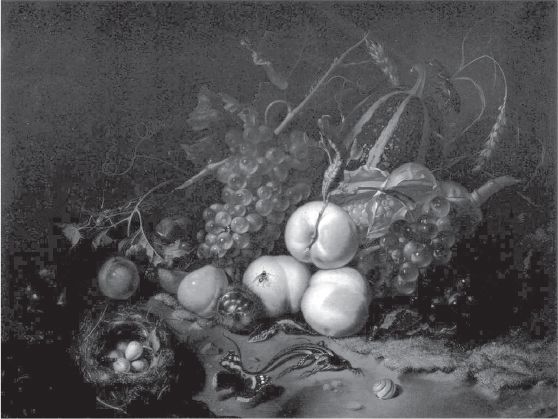
Figure 6
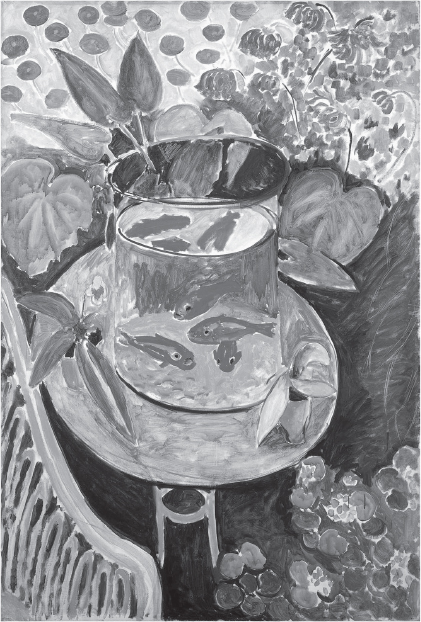
Figure 7
17.Both of these works are examples of
(A)genre paintings
(B)still lifes
(C)frescoes
(D)di sotto in sù
18.The work on the right was created during a period called
(A)Cubism
(B)De Stijl
(C)Expressionism
(D)Fauvism
19.Unlike the work on the left, the work on the right shows an influence from
(A)Asian decorative patterns
(B)African architecture
(C)Renaissance perspective
(D)color theories based on musical notation
20.The work on the left, unlike the work on the right, is concerned with
(A)the arrangement of objects in relationship to one another
(B)the study of botany
(C)demonstrating the artist’s ability to depict objects in a natural environment
(D)ecology
21.Mblo masks are works of art that
(A)resemble kings and act in their place when the king is absent
(B)seek to create a connection to fertility gods through ceremonies and rituals
(C)honor an individual by being presented with an artistic double
(D)have nails driven into them to prod the spirits into action
22.Mblo masks are characterized by their
(A)powerful and aggressive nature
(B)introspective and thoughtful look
(C)faithful adherence to the likeness of the person or spirit depicted
(D)feminine qualities
23.The Lamentation by Giotto is a work that is set in a context that
(A)parallels Old and New Testament stories
(B)emphasizes the punishment of the damned but not the forgiveness of sins
(C)seeks salvation for those who refuse to repent
(D)criticizes the Church and wants to reform it
24.Giotto’s works most influenced the art of
(A)Michelangelo
(B)Rembrandt
(C)Jan van Eyck
(D)Lucas Cranach
Questions 25–27 are based on Figure 8.
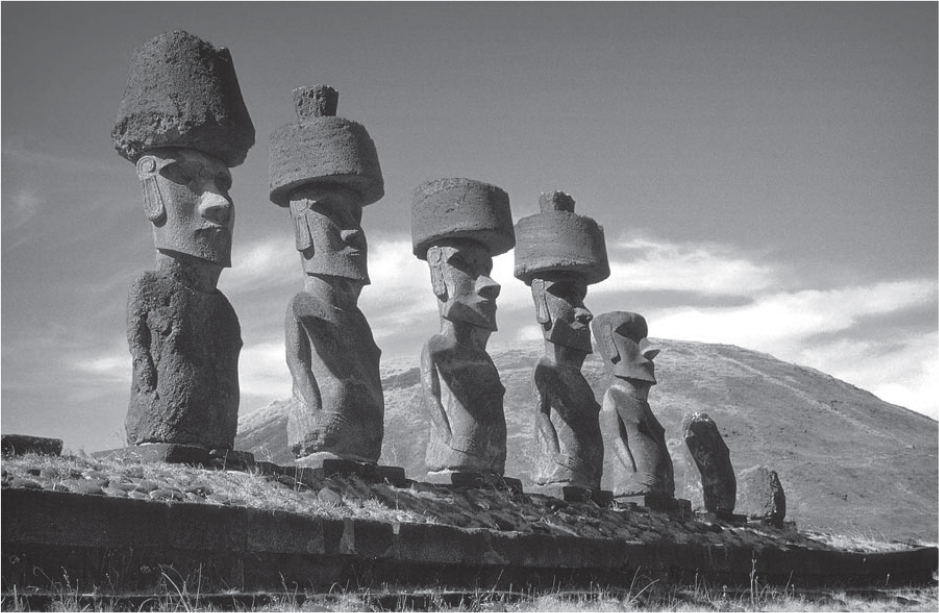
Figure 8
25.The sculptures are arranged facing
(A)inland and toward the center of the island signifying protection from the sea
(B)outward and toward the sea signifying where their creators came from
(C)the sun signifying their creator’s worshipping of solar deities
(D)many directions signifying the artists’ interest in adapting the sculpture to the individual site
26.The images on the sculptures are of
(A)ancestral chiefs who have been deified after death
(B)shamans who have led their congregations in worship
(C)ancestors who have had the ability to contact the spirit world
(D)Europeans who were considered gods in the eyes of the natives
27.Stone altar platforms on which these works sit are
(A)common in Pre-Columbian art, where this tradition comes from
(B)common in Polynesian sacred religious sites
(C)uncommon in Pacific Island cultures and unique to this grouping
(D)uncommon in Polynesian art, but common in the rest of the Pacific
Question 28 is based on Figure 9.
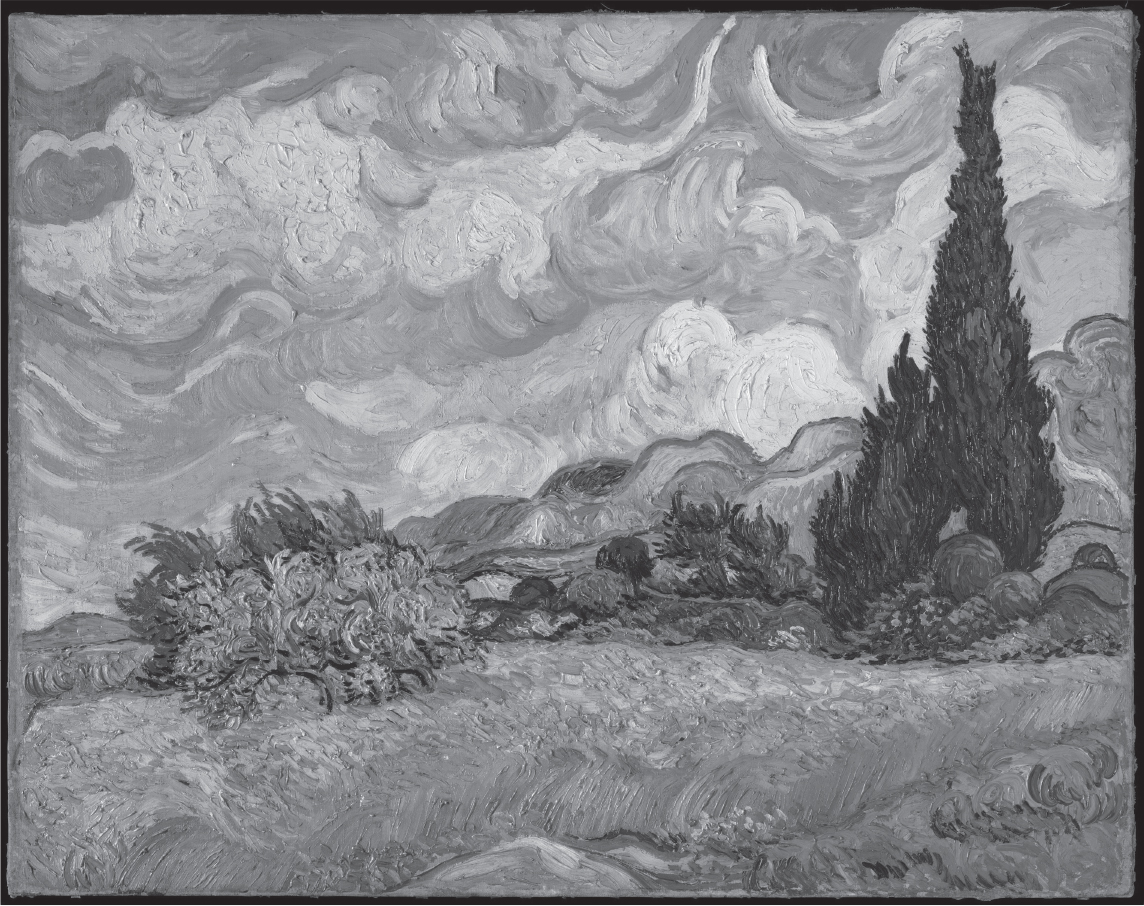
Figure 9
28.On the basis of style, this work can be attributed to
(A)Paul Cézanne
(B)Claude Monet
(C)Jose María Velasco
(D)Vincent van Gogh
Questions 29 and 30 are based on Figure 10.
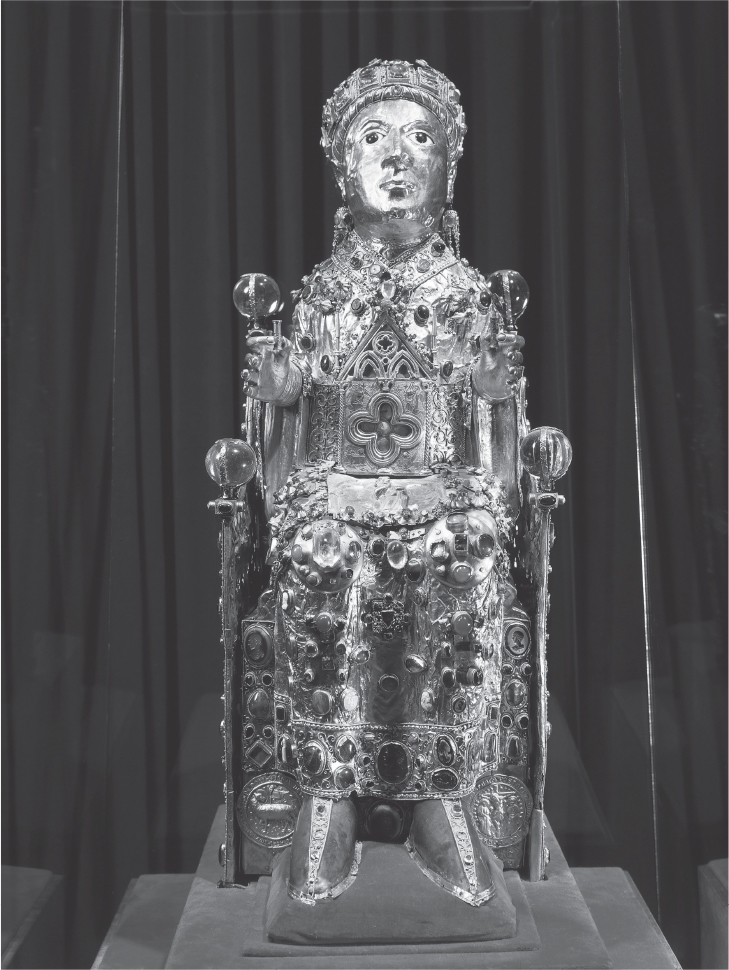
Figure 10
29.This reliquary commemorates
(A)a king’s splendid court
(B)a martyr’s death for her faith
(C)victory over pagan gods
(D)episodes from the life of a saint
30.Works like these were under criticism because some contemporaries felt
(A)people used the objects for satanic rituals
(B)the objects encouraged idolatry
(C)the objects were ghoulish and disturbing
(D)they were pagan and sinful
Question 31 is based on Figure 11.
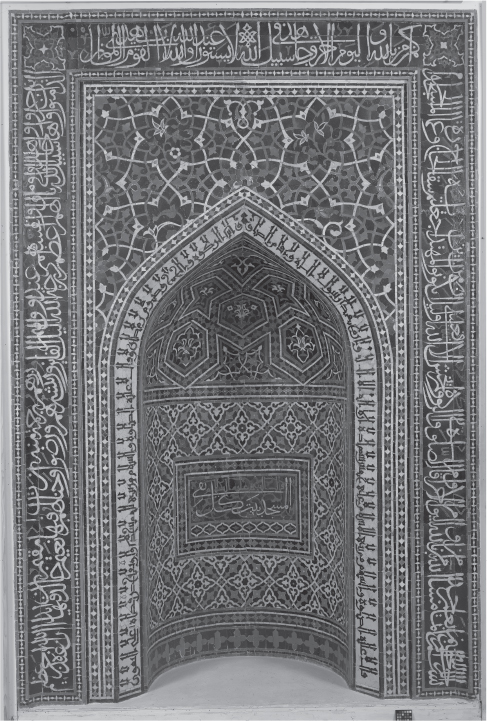
Figure 11
31.The function of this object is called
(A)a jail
(B)a minaret
(C)an iwan
(D)a mihrab
Question 32 is based on Figure 12.
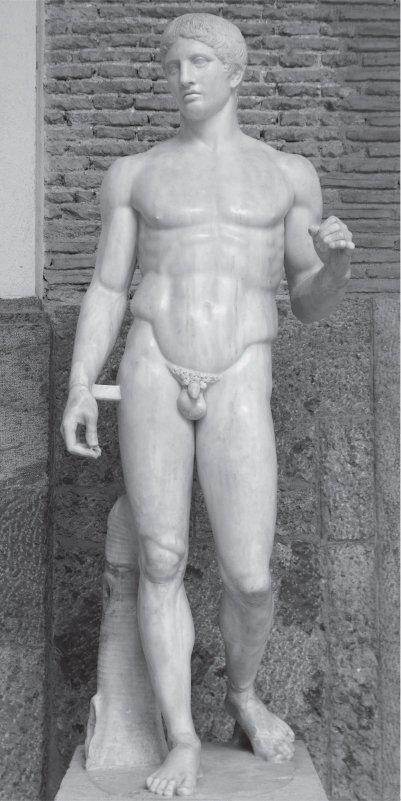
Figure 12
32.This sculpture is an expression of idealization developed in the
(A)fifth century B.C.E. and called a canon
(B)fourth century B.C.E. and called spolia
(C)third century B.C.E. and called symmetry
(D)fifth century B.C.E. and called peristyle
33.The Egyptian Book of the Dead
(A)guides the progress of a soul to the afterlife
(B)measures the time a soul has on earth and in the afterlife
(C)shows how to embalm bodies for preparation to the afterlife
(D)illustrates the funeral processions of the deceased
34.The Egyptian sculpture of a seated scribe is
(A)depicted as a heroic figure, because the act of writing immortalizes the subject
(B)shown as tired and weary, because writing is exhausting and draining
(C)dressed as a member of the upper class, because only aristocrats were taught to read and write
(D)illustrated as sedentary, because the lifestyle of a writer is one of long hours spent sitting still
35.The Court of Gayumars tells the story of
(A)Sultan Muhammad and his rise to power in Tabriz
(B)the Persian conquering of the Greeks under the reign of Xerxes
(C)the legendary reign of the first Shah of the Persians
(D)The Arabian Nights tale of Scheherazade
36.The mood and style of The Court of Gayumars can best be described as
(A)monumental, grand, and awesome
(B)intricate, decorative, and lively
(C)serious, somber, and desolate
(D)humorous, satiric, and farcical
37.Leonardo da Vinci’s Last Supper was painted in a location that was meant to make a connection between a Biblical scene of eating and
(A)pilgrims eating along a pilgrimage journey
(B)a refectory where religious people ate
(C)a banqueting hall for a royal court
(D)a church celebrating the Eucharist
38.Claus Oldenburg’s Lipstick (Ascending) on Caterpillar Tracks was made as an ironic commentary on
(A)the Feminist movement
(B)the art of Andy Warhol
(C)the Vietnam War
(D)consumerism and modern culture
Questions 39 and 40 are based on Figure 13.
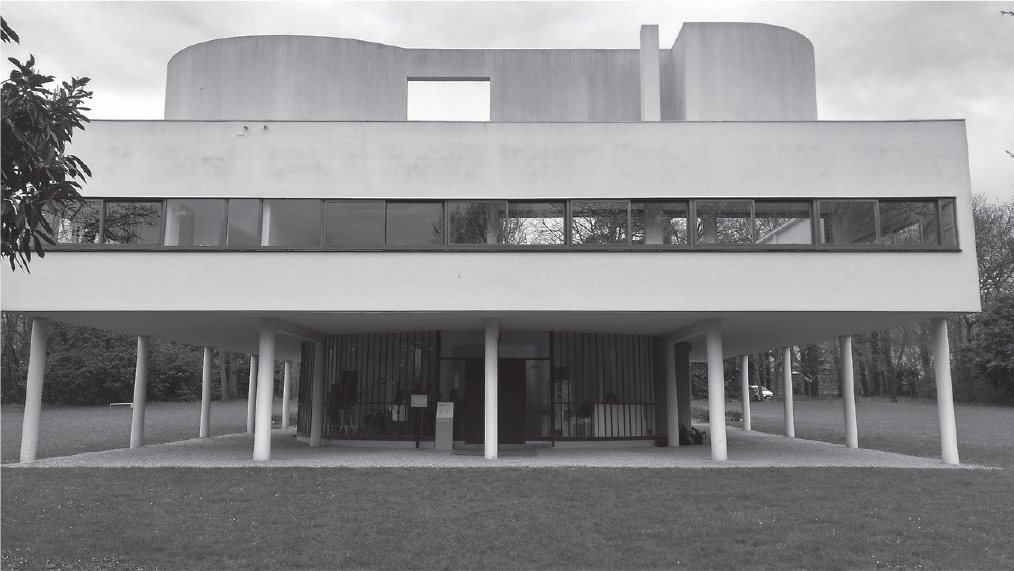
Figure 13
39.This house was designed by
(A)Le Corbusier
(B)Frank Lloyd Wright
(C)Philip Johnson
(D)Frank Gehry
40.The architect’s philosophy of building is expressed by the idea that
(A)construction should be environmentally friendly
(B)only the use of natural material would be permitted
(C)less is more
(D)a house is a machine for living
Question 41 is based on Figure 14.
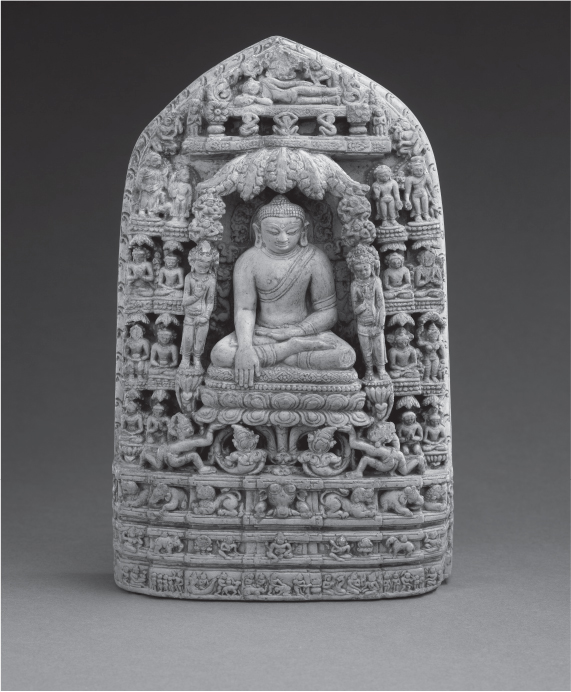
Figure 14
41.The artistic technique shown in this Indian Buddha is called
(A)horror vacui
(B)pyxis
(C)peristyle
(D)one-point perspective
Question 42 is based on Figure 15.
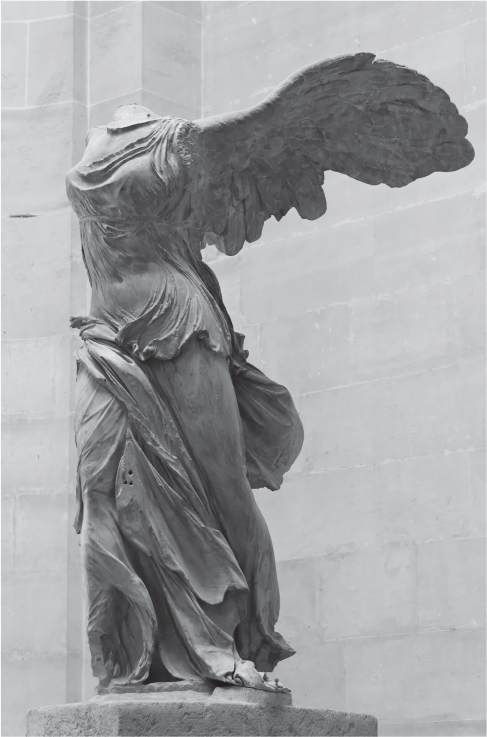
Figure 15
42.This work was originally positioned
(A)on the top of a building
(B)on a mountainside
(C)above a fountain in a town square
(D)in a river
Questions 43 and 44 are based on Figures 16 and 17.
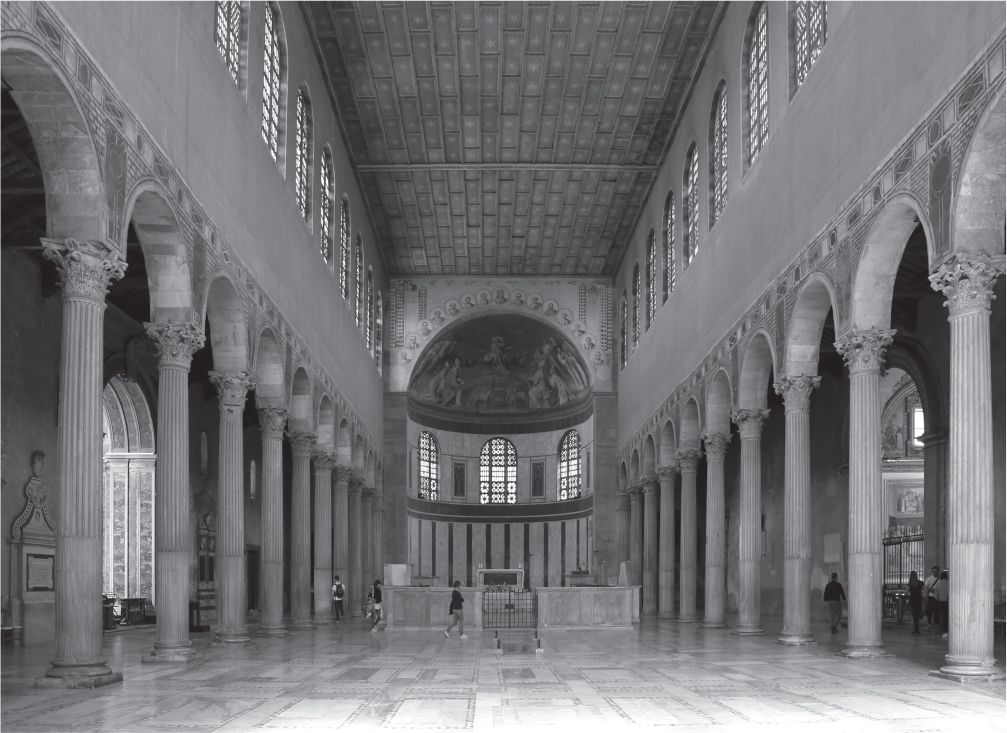
Figure 16

Figure 17
43.The interior columns in Santa Sabina, as seen in Figure 13, were
(A)created from porphyry columns imported from Egypt
(B)removed from a Roman temple and reused here
(C)taken from Jewish temples in Jerusalem, whose significance was held in high regard
(D)made of transparent gypsum and appear opaque in certain lighting conditions
44.The ground plan in Figure 17 shows a central nave and two side aisles constructed
(A)so that worship can be done by men in the nave and women in the side aisles
(B)for the clergy to use the nave as a processional space
(C)for baptisms in the nave as the congregation watches in the side aisles
(D)for the use of initiates in the side aisles
45.Marcel Duchamp’s work as an artist prefigures the work of
(A)Emily Kame Kngwarreye
(B)Song Su-nam
(C)Naum June Paik
(D)Jeff Koons
Questions 46 and 47 are based on Figure 18.

Figure 18
46.This plan is that of a Roman house. It tells us that
(A)there is limited access to the inside from the outside
(B)windows are plentiful on the perimeter of the house
(C)the rooms are large and comfortable
(D)there is an accent on privacy
47.The large area on the left is probably
(A)an agora
(B)an amphiprostyle
(C)a stoa
(D)a peristyle
Question 48 is based on Figure 19.
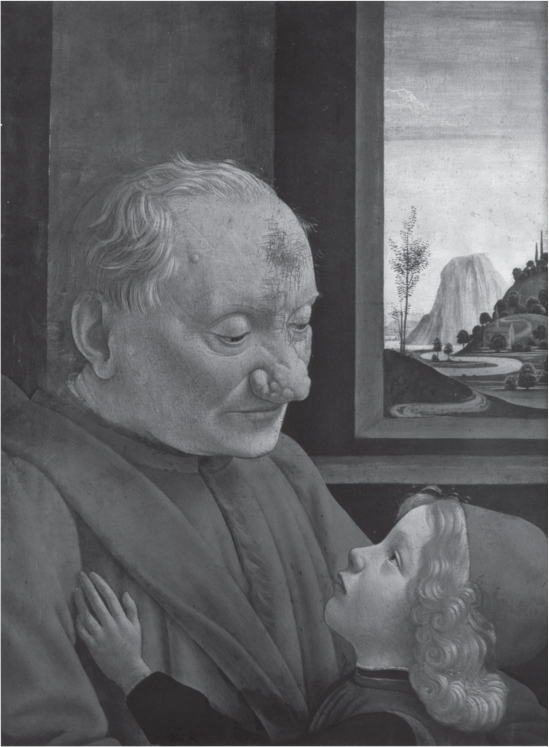
Figure 19
48.This painting by Domenico Ghirlandaio is inspired by works by
(A)Giotto di Bondone
(B)Sandro Botticelli
(C)Fra Filippo Lippi
(D)Diego Velázquez
49.Doris Salcedo’s Shibboleth relies on the viewer understanding the title, which means
(A)a dangerous procedure that needs proper attention before pursuing
(B)a crack or a gulf in relationships symbolized by antisocial behavior
(C)a word or custom that a person not familiar with a language may mispronounce
(D)a virus that can contaminate a person both physically and morally
50.The strength of the female persona is strongly articulated in the works of
(A)Kiki Smith
(B)Rachel Ruysch
(C)Julie Mehretu
(D)Yinka Shonibare
51.Song Su-nam’s works express an interest in
(A)adapting traditional formulas onto contemporary works
(B)moving people away from purely aesthetic concerns to contemporary issues
(C)instructing young people in the arts of today
(D)multimedia presentations of ancient works
52.Sinan, the chief architect for Suleyman the Magnificent, was chiefly influenced by
(A)the Parthenon in Athens
(B)the Hagia Sophia in Istanbul
(C)the Dome of the Rock in Jerusalem
(D)the Kaaba in Mecca
53.Aspects of the Enlightenment period in European art can be seen in the works of
(A)Jean-Honoré Fragonard
(B)Joseph Wright of Derby
(C)William Hogarth
(D)Peter Paul Rubens
54.The Jowo Rinpoche from the Jokhang Temple is unusual in that
(A)it is thought to have been blessed by the Buddha himself
(B)it is conceived of as a metal object, but ultimately was crafted in porcelain
(C)Buddhists, Hindus, and Muslims all revere the object
(D)it is a composite statue made from different parts of other works
55.Regeneration and fertility are often symbols depicted on images found in
(A)Islamic manuscripts
(B)tapa bark cloths
(C)Indian temples
(D)American Indian pottery
56.Congs were symbolic in Chinese culture because jade
(A)is linked with durability, subtlety, and beauty
(B)has a soft quality that associates it with female virtues
(C)is iridescent and stands for the heavenly realm
(D)is found in small quantities and therefore is very expensive and symbolizes wealth
57.Ashlar masonry is used in the construction of
(A)the Walls at Saqsa Waman in Peru
(B)the Colosseum in Rome
(C)the Houses of Parliament in London
(D)the Alhambra in Granada
Question 58 is based on Figure 20.

Figure 20
58.On the basis of style, this work can be attributed to which of the following periods?
(A)Gothic
(B)Romanesque
(C)Early Medieval
(D)Northern Renaissance
59.Prehistoric art can be found in groupings of objects as well as by themselves. Often groupings indicate that
(A)they were done by a workshop with a unified artistic vision
(B)artists traveled from place to place to establish a reputation
(C)they were done over a vast period of time
(D)there was commentary made on previous works by other artists
60.Joseph Turner’s Slave Ship (Slavers Throwing Overboard the Dead and Dying, Typhoon Coming On) was exhibited
(A)with a poem composed by the artist
(B)as part of an antislavery exhibition in London
(C)in a private space so that authorities would not confiscate the work
(D)in Paris, because it was safer to represent anti-British works abroad
61.An example of a work that is a caprice is
(A)Jean-Honoré Fragonard’s The Swing
(B)Francisco de Goya’s And There’s Nothing to Be Done
(C)Gustave Courbet’s The Stone Breakers
(D)José Maria Velasco’s The Valley of Mexico from the Hillside of Santa Isabel
62.In Paul Gauguin’s Where Do We Come From? What Are We? Where Are We Going? the artist has used symbols derived from
(A)Neoclassical formulas of composition and body style
(B)Postimpressionist brushwork as seen in the works of van Gogh
(C)Tahitian imagery in the Polynesian idol
(D)French Impressionism in the atmospheric effects
63.Based on the artistic style of his work, which of the following artists was a pupil of Gianlorenzo Bernini?
(A)Johannes Vermeer
(B)Giovanni Battista Gaulli
(C)Caravaggio
(D)Peter Paul Rubens
64.Although an Impressionist, Mary Cassatt often deviated from the works produced by other artists in that
(A)her work shows an affection for landscape
(B)group portraits are the dominant element in Cassatt’s oeuvre
(C)still life takes on a greater meaning for Cassatt than for other Impressionists
(D)Cassatt emphasizes the role of women living lives independently from men
Questions 65–68 are based on Figure 21.
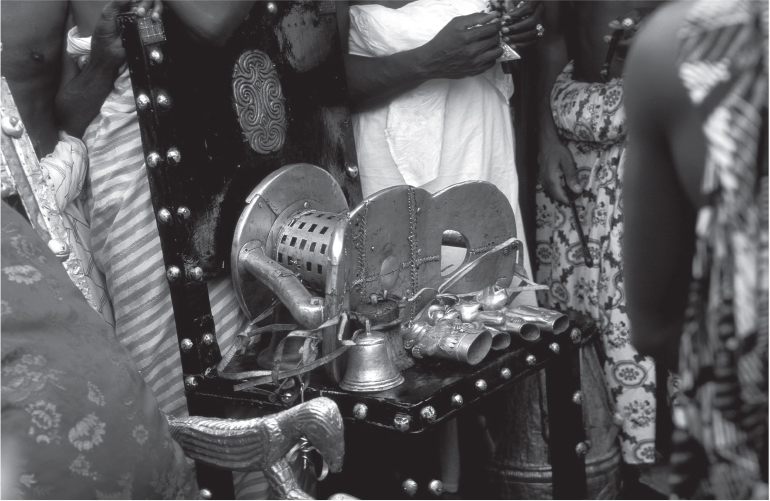
Figure 21
65.The Golden Stool (sika dwa kofi) fulfills which of the following functions?
(A)A seat of power for the current religious leader
(B)A receptacle for the soul of the nation
(C)A physical embodiment of the culture’s primary deity
(D)A container for the culture’s sacred relics
66.The sika dwa kofi (Golden Stool) inspired a war when
(A)a visiting ruler used it as spolia
(B)an opposing tribe stole it
(C)a deposed leader refused to return it
(D)a British representative tried to sit on it
67.This work shown can be attributed to
(A)the Etruscans
(B)the Ashanti
(C)the Inkans
(D)the Yarlung Dynasty
68.The Golden Stool (sika dwa kofi) and the gold and jade crown from Korea are similar in that both works
(A)are used in mortuary practices
(B)are symbols of national pride
(C)are used by visiting dignitaries as a sign of respect and welcome
(D)are used daily by the current political leader
69. Many Byzantine icons
(A)were meant to be touched and handled
(B)represented the real world and people’s approach to everyday problems
(C)were painted by ivory carvers
(D)were kept in isolation so that few could see them
70.Which of the following statements is true about both the Basin (Baptistère de Saint Louis) and the Pyxis of al-Mughira?
(A)They were both created for one purpose and then reused for another.
(B)They are both works whose artists’ names are known.
(C)They are both decorated using human and animal motifs.
(D)They are both grand objects used for majestic and important occasions.
Questions 71 and 72 are based on Figure 22.

Figure 22
71.The formal qualities of this work identify it as an example of
(A)an Islamic manuscript done in Muslim Spain using animal motifs
(B)a Byzantine manuscript done in Greece using gold leaf
(C)a Mughal manuscript done in India using a combination of Indian and Islamic characteristics
(D)a Chinese manuscript done in Japan combining the influence of scroll painting and ukiyo-e prints
72.This work can be interpreted to mean
(A)Jahangir is on an equal footing with the other kings of the world
(B)Jahangir sees that spiritual enlightenment is greater than all earthly concerns
(C)that cosmic forces compel Jahangir to rule his country with no advice from others
(D)that life is temporary, but Jahangir will live in the next world
73.The complex at Nan Madol is unusual in tradition in that
(A)it is built near the sea for quick access to trade routes
(B)it is decorated with stone sculpture that shows an ancient lineage
(C)it is built on a mountaintop for all to admire
(D)it is made of stone and gives a sense of permanence
74.A pilgrim progressing through the temple at Borobudur is meant to worship by
(A)placing himself or herself in a meditative state at the entrance
(B)placing written requests in a wall at the base of the monument
(C)circumambulating each of the main terraces until he or she gets to the top
(D)entering from the darkened areas and emerging into the light
75.Robert Smithson’s Spiral Jetty draws inspiration from works such as
(A)de Kooning, Woman, I
(B)Pantheon, Rome
(C)Great Stupa
(D)Great Serpent Mound
76.Although the animals depicted in Albrecht Dürer’s Adam and Eve may allude to a peaceful coexistence in the Garden of Eden, they may also allude to
(A)the four directions of the compass
(B)the four seasons of the year
(C)the four humors
(D)the four corners of the earth
77.Beads and cowrie shells used in works like the Aka (elephant mask) are meant to symbolize
(A)the wealth of the members of the Kuosi society, who used the masks in performance
(B)the subtle color patterns on the skin of elephants
(C)the use of materials to simulate the ivory of elephant tusks
(D)the magical powers and spells used by the Kuosi people
Question 78 is based on Figure 23.
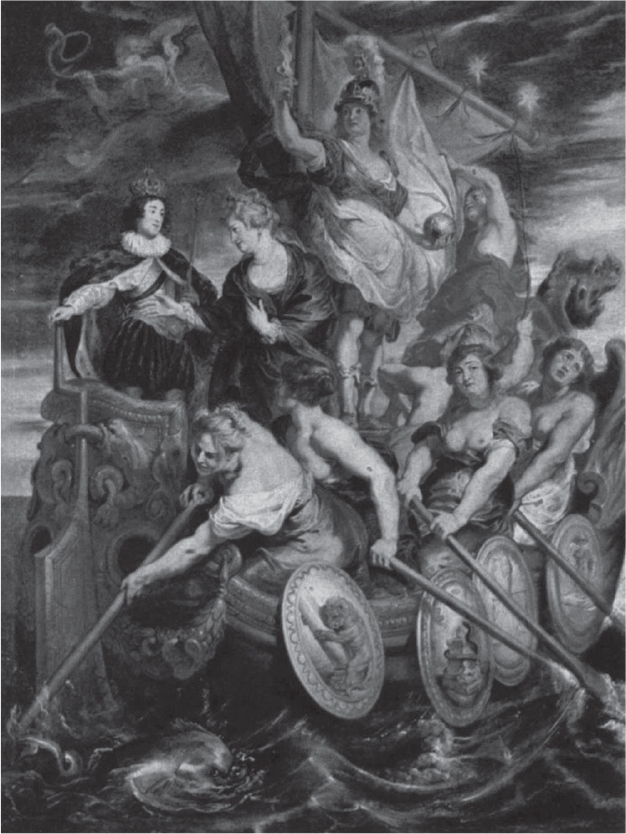
Figure 23
78.On the basis of style, this painting can be attributed to
(A)Jan Vermeer
(B)Rembrandt van Rijn
(C)Caravaggio
(D)Peter Paul Rubens
79.The use of stone in such prehistoric structures as Stonehenge illustrates an architectural tradition that
(A)employed a mortise and tenon system for supporting lintels
(B)showed the enduring power of concrete to unify large blocks of stone
(C)maintained the stability of structures using a corbeled arch
(D)unified architectural works with carefully planned gardens
80.Installations, such as Doris Salcedo’s Shibboleth, often are housed
(A)in government buildings, where freedom of expression is permitted by law
(B)in universities, where controversial works of art are set in spaces that stimulate discussion
(C)in art museums, where large works are housed for a certain period of time before they are removed for the next installation
(D)outdoors, where the ordinary people can interact with the works
SECTION II
TIME: 2 HOURS
6 QUESTIONS
DIRECTIONS: You have two hours to answer the six questions in this section.
Questions 1 and 2 are long essay questions, and you are advised to spend one hour on both.
Questions 3 through 6 are short essay questions, and you are advised to spend 15 minutes on each.
During the actual exam, the proctor will announce when each question’s time limit has been reached, but you may proceed freely from one question to another.
Some of the questions refer to images; some do not.
Read the questions carefully. You can receive full credit only by directly answering all aspects of the question.
Question 1: 35 minutes suggested time
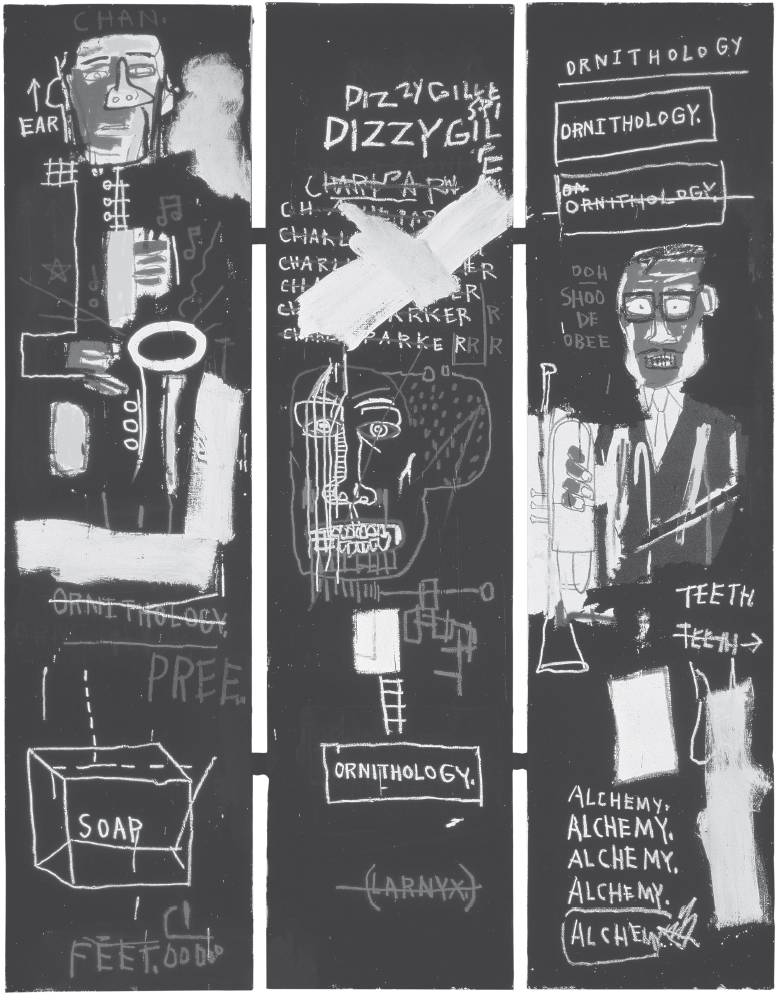
This illustration is Jean-Michel Basquiat’s Horn Players, 1983, acrylic and oil paintstick on canvas panels.
This work is painted as a tribute to subjects the artist admired.
Select and identify another work of art in which the artist has depicted someone, or a group of people, as a subject of admiration. You may select a work from the list below or any other relevant work.
For both Horn Players and your selected work, describe what is being depicted.
Discuss at least two examples of visual evidence of how the artists showed their admiration for the subject of each work.
Using contextual evidence, explain how each work is a representation of the circumstances around which it was created.
Explain at least one difference in the representation of both of these works.
Portrait of Sin Sukju
Dream of a Sunday Afternoon in Alameda Park
Memorial Sheet for Karl Liebknecht
Question 2: 25 minutes suggested time
Many works of contemporary art are installations, that is, a temporary work made for a particular space.
Select and completely identify a contemporary work of art from the list below, or any other relevant work that is an installation.
Discuss the meaning behind the installation you have chosen, and how the artist has delivered that meaning through the choice of materials, techniques and/or siting of the work.
In your answer, make sure to:
▪Accurately identify the work you have chosen with at least two identifiers beyond those given.
▪Respond to the question with an art historically defensible thesis statement.
▪Support your claim with at least two examples of visual and/or contextual evidence.
▪Explain how the evidence that you have supplied supports your thesis.
▪Use your evidence to corroborate or modify your thesis.
A Book from the Sky
Shibboleth
Sunflower Seeds
Question 3: 15 minutes suggested time
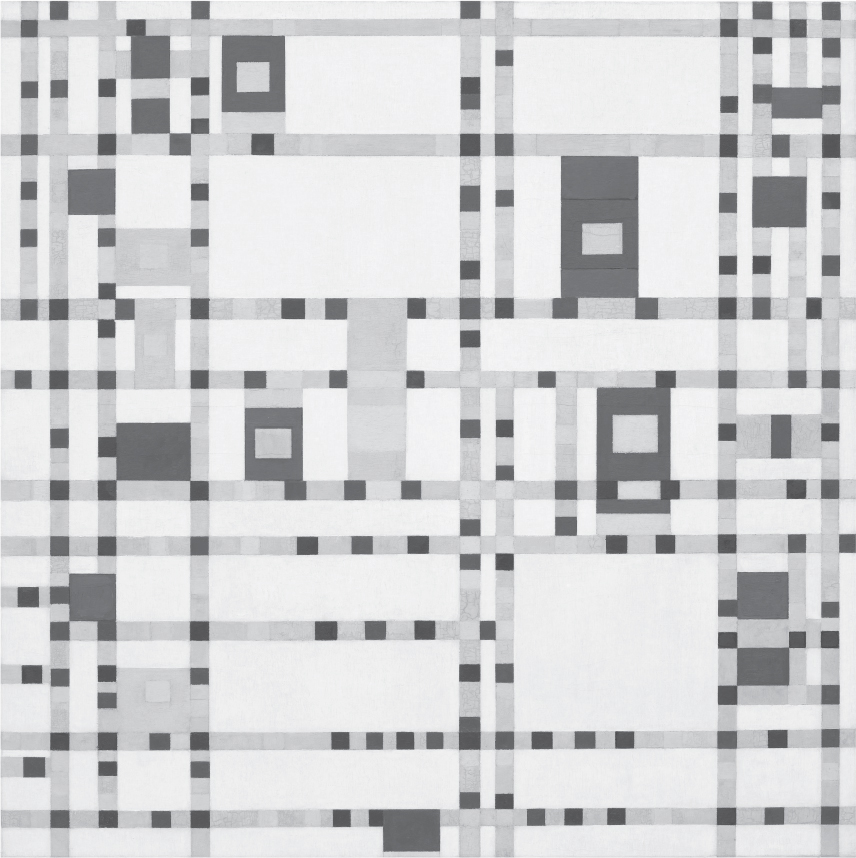
The work shown is Broadway Boogie Woogie by Piet Mondrian painted in 1942–1943.
What period in modern art is Mondrian associated with?
Using at least two examples of visual evidence, discuss how elements of Mondrian’s style can be seen in this work.
Using at least two examples of visual evidence, discuss how Mondrian’s style departs from earlier twentieth-century abstract works of art.
Question 4: 15 minutes suggested time

This work is Il Gesù, the façade designed by Giacomo della Porta, and the ceiling fresco by Giovanni Battista Gaulli.
What is the original function of this church?
Using at least two examples of contextual or visual evidence, explain how the original function influenced the design of this building.
Using at least two examples of contextual or visual evidence, discuss how the ceiling fresco reflects the function of the building.
Question 5: 15 minutes suggested time
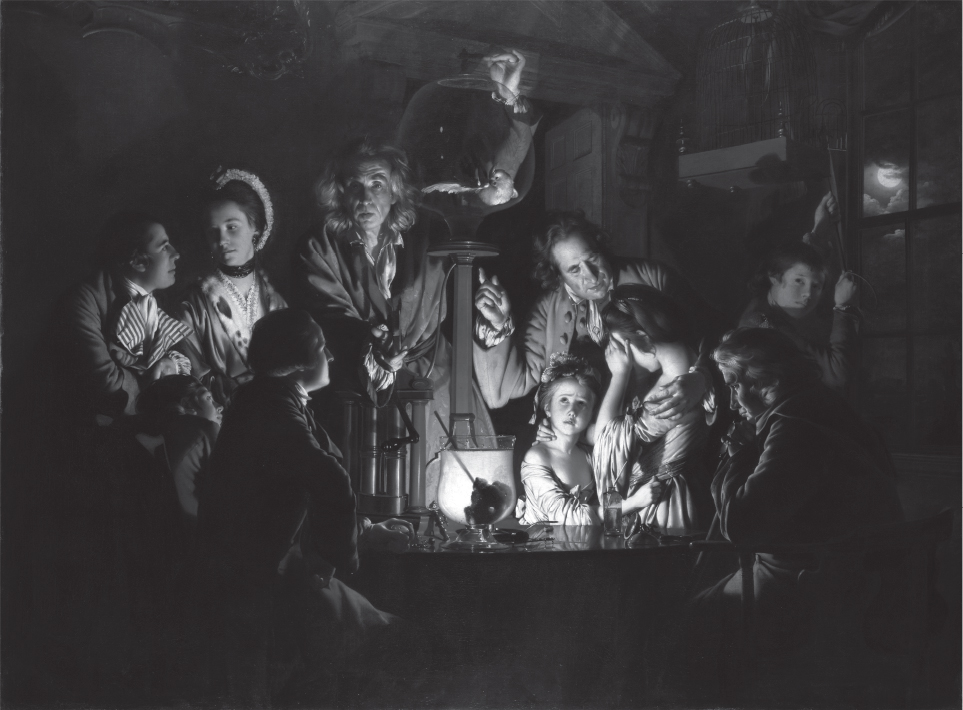
Attribute this painting to the artist who painted it.
Using at least two specific details, justify your attribution by describing relevant similarities between this work and a work in the required course content.
Using at least two specific details, discuss why these visual elements are characteristic of this artist and the times in which he lived.
Question 6: 15 minutes suggested time

On the left is the wall plaque from the Oba’s palace from the sixteenth century. It is made of brass. On the right is the late Oba Akenzua II in full regalia depicted in a photograph from 1964.
Explain the purpose of the wall plaque.
Discuss at least two specific visual elements in the wall plaque that illustrate its purpose.
Explain at least two reasons how these elements continue to represent the Oba king today, as seen in the contextual photograph.
| ANSWER KEY |
| Practice Test 2 |
|
Section I 1. C 2. B 3. B 4. B 5. D 6. C 7. A 8. C 9. B 10. A 11. D 12. C 13. C 14. A 15. B 16. C 17. B 18. D 19. A 20. B 21. C 22. B 23. A 24. A 25. A 26. A 27. B 28. D 29. B 30. B 31. D 32. A 33. A 34. D 35. C 36. B 37. B 38. C 39. A 40. D 41. A 42. C 43. B 44. A 45. D 46. A 47. D 48. C 49. C 50. A 51. A 52. B 53. B 54. A 55. C 56. A 57. A 58. B 59. C 60. A 61. B 62. C 63. B 64. D 65. B 66. D 67. B 68. B 69. A 70. C 71. C 72. B 73. D 74. C 75. D 76. C 77. A 78. D 79. A 80. C |
Section I
1.(C) Marcel Duchamp used a repurposed urinal to create his work Fountain.
2.(B) When Europeans encountered Polynesians they brought with them cans of packaged meat, including corned beef, which led to the abandonment of traditional food gathering activities and a reliance on the convenience of canned meat. Polynesian diets were high in fish, vegetables, and fruit prior to European contact.
3.(B) Oftentimes Tuffery’s sculptures are enlivened in multimedia performances by being placed on wheels and mounted with motors.
4.(B) The drapery found in the costuming of the figures is similar to that used in Baroque Europe.
5.(D) The figure on the right is not a specific individual, but rather a symbol of upper class Europeans who have had a child with a Native American.
6.(C) Casta, or “caste,” paintings show the degrees of ancestry and hierarchy in Spanish society in the New World.
7.(A) The woman has the skin coloring of a Native American, but otherwise has the features of a European.
8.(C) This building is the Carson, Pirie, Scott and Company Building in Chicago. It does not have a focus the way mosques and cathedrals do. It could not be a typical home because of the great number of interior columns.
9.(B) This is a skeletal structure, held up by an interior framework rather than by exterior walls.
10.(A) The mosque of Córdoba has a forest of columns that divide up the space into segments.
11.(D) The plan tells us that the entrance is in the lower left hand corner, and the interior is marked by large columns indicated by the evenly placed dots.
12.(C) The double sets of lines along the left and bottom sides of the plan indicate rows of windows.
13.(C) An anthropomorphized figure is one that has some human characteristics, but essentially is not human.
14.(A) Many prehistoric objects are made of stone, and carved using another stone.
15.(B) It has been theorized that the Ambum Stone may be an anteater in a fetal position. There have been other theories as well, but none of the other choices fit those theories.
16.(C) A stylized work does not show a realistic view of someone or something, but rather a schematic rendering.
17.(B) These are two still lifes, that is, paintings of inanimate objects.
18.(D) The work on the right, by Henri Matisse, is from the Fauvist period in the early twentieth century.
19.(A) Matisse is said to have been generally influenced by Asian decorative patterns in many of his still lifes.
20.(B) Ruysch’s father was a professor of anatomy and botany and influenced his daughter’s interest in these fields.
21.(C) Mblo masks are artistic doubles of a real person, who is honored by receiving these works.
22.(B) Mblo masks are not realistic portraits, but seek instead to characterize the introspective nature of a person.
23.(A) Giotto’s work is in a setting that parallels stories from the Old and New Testaments side by side.
24.(A) Giotto’s sense of scale and size influenced the art of Michelangelo more forcefully than the other artists listed as choices.
25.(A) The sculptures are arranged on platforms and face inland toward the center of the island.
26.(A) The most prevalent theory is that the sculptures represent ancestral chiefs who have been deified after death.
27.(B) Large stone sculptures are extremely uncommon in Pacific art, but the platforms form the base of many architectural and sculptural projects throughout the region.
28.(D) Van Gogh’s style is very distinctive with his swirling patterns and vibrant colors. This work shares with The Starry Night the thick application of paint and the horizontal composition.
29.(B) This reliquary is of Sainte-Foy, a young woman who was martyred for her faith.
30.(B) Works like these were often criticized at the time because the faithful often treated them as idols.
31.(D) This object is called a mihrab, and points the Muslim faith in the direction of Mecca, a necessary part of Islamic worship.
32.(A) The sculptor, Polykleitos, is famous for having written a canon of human proportions, which no longer exists, in the fifth century B.C.E.
33.(A) The Egyptian Book of the Dead charts the progress of a soul in the afterlife, among other things.
34.(D) The Egyptian sculpture of the seated scribe depicts a figure who has been used to a sedentary lifestyle, unmuscular and a bit flabby.
35.(C) This manuscript tells the story of the legendary ruler of early Persia.
36.(B) The intricate details, depicted in a decorative and lively fashion, are characteristic of this manuscript and many other manuscripts painted in Persian art.
37.(B) Leonardo’s painting was painted in a refectory used by monks. The image of a sacred scene of eating complemented the activity in the room.
38.(C) Oldenburg’s Lipstick (Ascending) on Caterpillar Tracks was done during the height of the Vietnam conflict and was an ironic commentary on the war.
39.(A) This is the Villa Savoye, designed by Le Corbusier.
40.(D) The architect often proclaimed that a house is supposed to be “a machine for living.”
41.(A) Horror vacui literally means a fear of empty spaces. It is a term that is used in works of art in which the surface area is entirely covered in design.
42.(C) This sculpture was originally designed to be placed above a fountain in a town square to symbolize a naval victory.
43.(B) The columns in Santa Sabina are spolia, which are taken from a Roman temple and repurposed here.
44.(A) In Early Christian churches men worshipped in the main aisle, and the women were separated, worshipping in the side aisles.
45.(D) The reuse of common objects, as seen in Duchamp’s Fountain, can be seen in the works of Jeff Koons.
46.(A) The ground plan of this Roman house shows few entrances.
47.(D) The large area on the left, surrounded by columns, is a peristyle courtyard, open to the sky.
48.(C) This painting by Ghirlandaio was done in the late fifteenth century, and has the same characteristics of Fra Filippo Lippi’s Madonna and Child with Two Angels. The humanized figures are placed before a window frame depicting a landscape that fades atmospherically into the distance.
49.(C) A shibboleth is a word or a custom that is used to separate or discriminate against people. Hence, this work is a huge split down the center of the floor.
50.(A) Kiki Smith uses positive, strong images of women in her work.
51.(A) Traditional Korean ink painting has been updated in the work of Song Su-nam.
52.(B) Sinan was influenced by the Hagia Sophia when he designed the Mosque of Selim II.
53.(B) Joseph Wright of Derby’s paintings often show activities of intellectual groups who gathered to discuss the latest advances in scientific theories.
54.(A) There is a tradition around the Jowo Rinpoche that it was blessed by the original Buddha himself.
55.(C) The façade of many Indian Hindu temples often contains scenes of fertility and regeneration. There are no images depicted on tapa cloths. Few images are on American Indian pottery, and those that are usually are extremely stylized. Persian manuscripts have images, but they virtually never show fertility in a direct manner. Other Islamic manuscripts have no images of humans.
56.(A) Jade is symbolic of durability, subtlety, and beauty in Chinese culture.
57.(A) Ashlar masonry—that is, masonry without mortar—is used in the walls as Saqsa Waman in Peru.
58.(B) This is the tympanum in Autun, France, designed by Gislebertus. Its flattened forms and active composition signal a resemblance to the tympanum at Conques.
59.(C) Prehistoric works that are found in large quantities were done over an extended period of time generally by different groups of people.
60.(A) Turner composed a poem called “The Fallacies of Hope” to accompany his painting.
61.(B) Goya’s etching And There’s Nothing to Be Done is a caprice, which is a work with a strong fantasy element.
62.(C) Paul Gauguin’s stay in Tahiti and his interest in Polynesian culture and storytelling served as a basis for much of his work.
63.(B) Gaulli’s dramatic use of color and action in his work stems from his tenure working under Gianlorenzo Bernini.
64.(D) Cassatt emphasized in her work how women could lead fulfilling lives independent of men. No other Impressionist took up this theme.
65.(B) Because of the sacred character of the Golden Stool, no one is allowed to touch it except the king because he—like the stool—contains the soul of the Ashanti nation.
66.(D) A British representative tried to sit on the stool in defiance of the sacredness that the stool represents. This act caused a rebellion.
67.(B) The work is from—and represents—the Ashanti people.
68.(B) The Korean crown was buried and therefore is a mortuary object, but the Golden Stool never had such a purpose. Today, both symbolize a pride in the history of their respective nations.
69.(A) Byzantine icons are not museum pieces; they were meant to be handled and touched and used in processions before the faithful.
70.(C) Both works have human and animal motifs carved into the surface. The name of the artist of the basin is known, but for the pyxis, only the name of patron is known. They are both small objects. Although the basin has changed function, the pyxis has always been used for the same purpose—as a small container for scented objects or gems.
71.(C) This manuscript contains both Indian and Islamic motifs. For example, the artist is a Hindu; as such, he used many images of people in his work (images generally are not seen in Islamic manuscripts). On the other hand, the writing is in Islamic script, and the patron is a Muslim.
72.(B) Jahangir’s preference for a sufi shaikh indicates that he is more interested in spiritual enlightenment than earthly concerns.
73.(D) Nan Madol is unusual in Polynesian architecture in that it is made of stone. It gives a sense of permanence and power that other Polynesian buildings did not have.
74.(C) Worshippers at Borobudur are meant to circumambulate each of the main terraces until they get to the top.
75.(D) The spiral forms seen from aerial views of the Great Serpent Mound in Ohio served as inspiration for Robert Smithson’s Spiral Jetty.
76.(C) The animals in Albrecht Dürer’s Adam and Eve allude to the four humors: the cat (choleric or angry), the rabbit (sanguine or energetic), the elk (melancholic or sad), the ox (phlegmatic or lethargic); the four humors were kept in balance before the Fall of Man.
77.(A) Since beads and cowrie shells had to be imported, their use in ceremonies showed witnesses to the rituals that certain members of the Kuosi society were wealthy and powerful.
78.(D) The fluid brushwork, bold use of color, and compositional liveliness all point toward a work by Peter Paul Rubens.
79.(A) The mortise and tenon system was used at Stonehenge. At the top of some of the uprights, small protuberances can be seen, which show that the lintels were meant to fit into a socket that secured them in place. Concrete, corbeled arches, and planned gardens were unknown in prehistoric Britain.
80.(C) Doris Salcedo, Ai Weiwei, Pepon Osorio, Bill Viola, and many other installation artists have their works occupy spaces in art museums for a short period of time. The works are removed, housed, and stored for a later installation, usually in another space. Although the other choices are possible, installation artists generally prefer the protective environment of an established art museum for their work.
Section II Answers
MODEL RESPONSE FOR QUESTION 1
Both Jean-Micheal Basquiat’s Horn Players and the Portrait of Sin Sukju show admiration and veneration of the subjects depicted in the two works.
In Horn Players, Basquiat has depicted Charlie Parker and Dizzy Gillespie who were two revered jazz musicians. Sin Sukju was the prime minister and collected a catalog of the prince’s Chinese and Korean Paintings. He was highly regarded as a scholar and politician and he is heroically recognized in his portrait.
Basquiat shows his admiration for Charlie Parker and Dizzy Gillespie by using a huge canvas and making his subjects large and stand out against a black background. He also uses words to capture famous things about them. Charlie Parker was nicknamed The Bird, so Basquiat writes ornithology which means the study of birds. He also writes gibberish by Dizzy Gillespie to show the wordless improvisation that he often sang while performing on stage. These words call out the unique aspects of the two men and invoke their presence.
The Portrait of Sin Sukju also shows admiration of the man depicted. He is shown in official robes and a hat with the rank badge on his chest. The portrait is very detailed and captures the likeness of Sin Sukju, which makes it personalized and unique to only the man in the painting.
Horn Players is a representation of black culture in the 1980s, especially in New York where Basquiat was living. He uses his art and status to depict black heroes, something which was not seen at the time. Basquiat also hoped to write himself into the art history canon and did so by appropriating other famous works.
The Portrait of Sin Sukju is representation of Korean culture after a lengthy Mongol rule. It shows Confucianism and the rewards that come from abiding by them. These Confucian values are service to the state and loyalty to the ruler. These portraits were used for ancestral rituals after death, which shows the legacy of a person in life continuing after death.
A difference in the two works is that Basquiat uses words in the depiction of his heroes whereas the Portrait of Sin Sukju is entirely visual.
—Anna B.
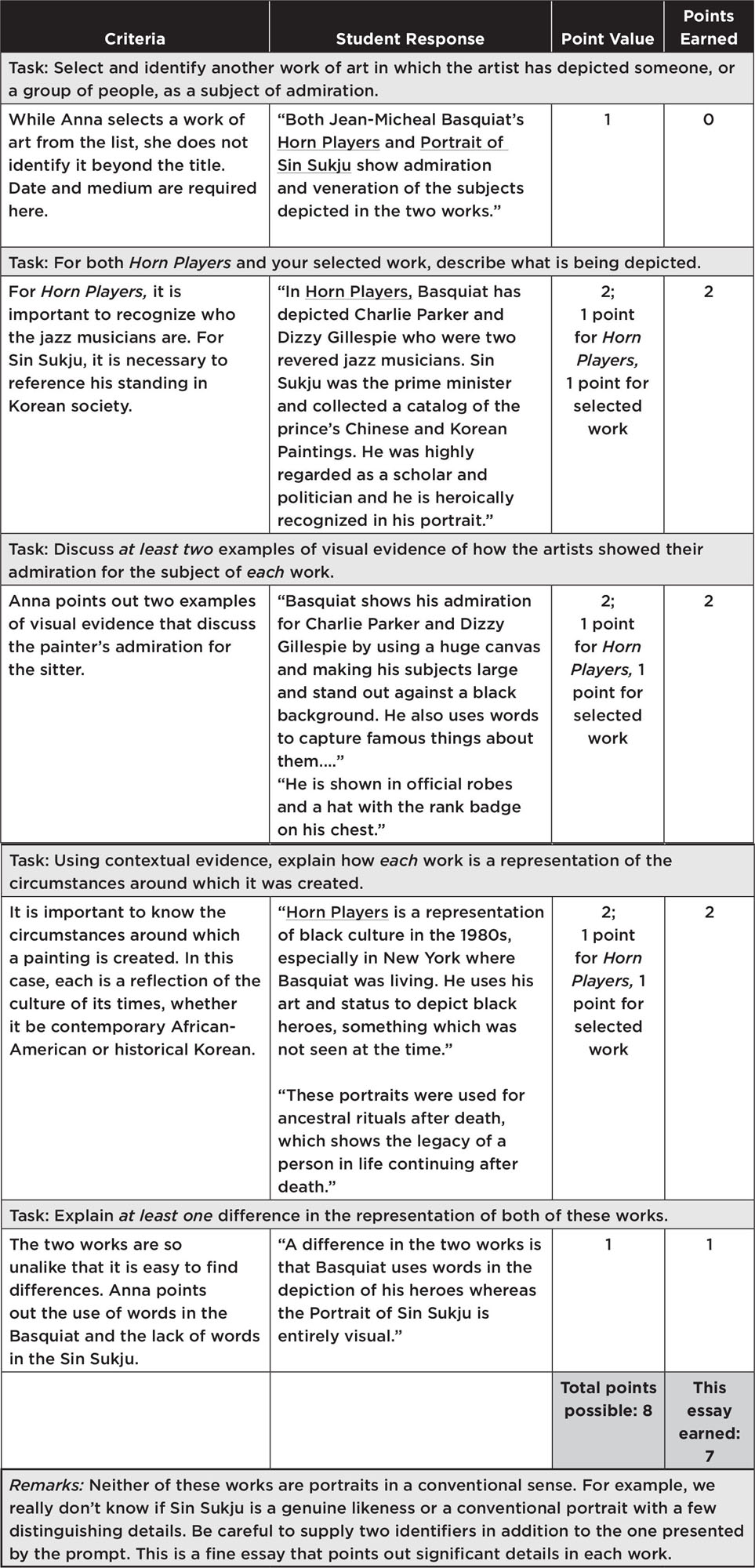
MODEL RESPONSE FOR QUESTION 2
Overwhelmingly, this work, Shibboleth, symbolizes the discrimination and separation that comes along with the experience of immigrants and “outsiders”. The work, a temporary installation accredited to Doris Salcedo, was housed in the Tate Modern between the years 2000 and 2010, and was constructed out of concrete and mesh wire. Visually, the allusions to cultural differences and divisions in general are apparent in the work’s installation in the Tate Modern, as a large crack, hundreds of feet long and several feet deep runs along the concrete floor of the installation, creating a physical divide in space. This long and jagged crack represents the manner in which cultural groups can be isolated and separated, however it also has another interpretation. Many see the crack also as a sort of scar. This is extremely important because it suggests that in the same way that physical wounds can be healed, we can work towards healing and mending the effects of racism and discrimination.
At the same time, this image of a scar seems to say that even though as a society we can strive to fix the inequality and violence of our present and past, the impact of racism will remain forever. Additionally, although originally intended for safety purposes in case someone was to trip and fall into the crack, the mark is outlined with wire mesh, which is so relevant to the experience of immigrants because barbed wire fences are what so often define the physical borders between countries in our world.
Finally, even the title of this installation harkens back to the idea of isolating and discriminating against outsiders. The story of the word shibboleth dates back to Christian theology, in which, after a war between two groups, the losers attempted to seamlessly assimilate into one of the victor’s bases for protection. In a ploy to single out all of the infiltrating soldiers, the victors used a test…the pronunciation of the word “shibboleth.” Because of the differing dialects between the two groups only those from the victorious faction would have been able to correctly say the word, and so, through this strategy, thousands of the infiltrating warriors were taken and killed. This story shows how some of the most subtle characteristics are used to differentiate between cultural groups, and to set those considered to be different apart from the rest. Finally, many visitors ended up tripping while viewing this display, causing quite a controversy, but it the end, Salcedo appreciated this reaction, because she felt as though it reflected the negativity and controversy that immigrants face in their new environments. Together, these characteristics of the Shibboleth installation work to communicate the trials experienced by immigrants and outsiders.
—Nathan L

MODEL RESPONSE FOR QUESTION 3
The modern art period in which Mondrian is associated with is known as the De Stijl movement.
The use of primary colors, other than the inclusion of whites and blacks, is one piece of visual evidence that is a common element in Mondrian’s works. Mondrian consistently used this minimal color palette throughout his works. Another piece of visual evidence that can be seen is the repetition of rectilinear forms. These rectilinear forms are an essential part of Mondrian’s style that create a sense of balance and calmness. Mondrian’s style focuses on this balance without making his works symmetrical, allowing for a more dynamic equilibrium.
One piece of visual evidence that sets Mondrian’s style apart from earlier twentieth-century abstract works of art is the pure abstraction. In many of Mondrian’s works, Mondrian was not attempting to recreate something in front of him. Rather, Mondrian’s goal was to create something that was visually calming. The flatness of many of Mondrian’s pieces is another example of visual evidence that sets Mondrian apart. By refusing to use diagonal lines, Mondrian creates pieces that are extremely flat and lack any sense of depth. Additionally, Mondrian’s ability to make his brushstrokes almost invisible is another difference from earlier twentieth-century abstract works. The invisibility of the brushstrokes allows for less movement throughout the piece which promotes the calmness in the piece.
—Paige A.
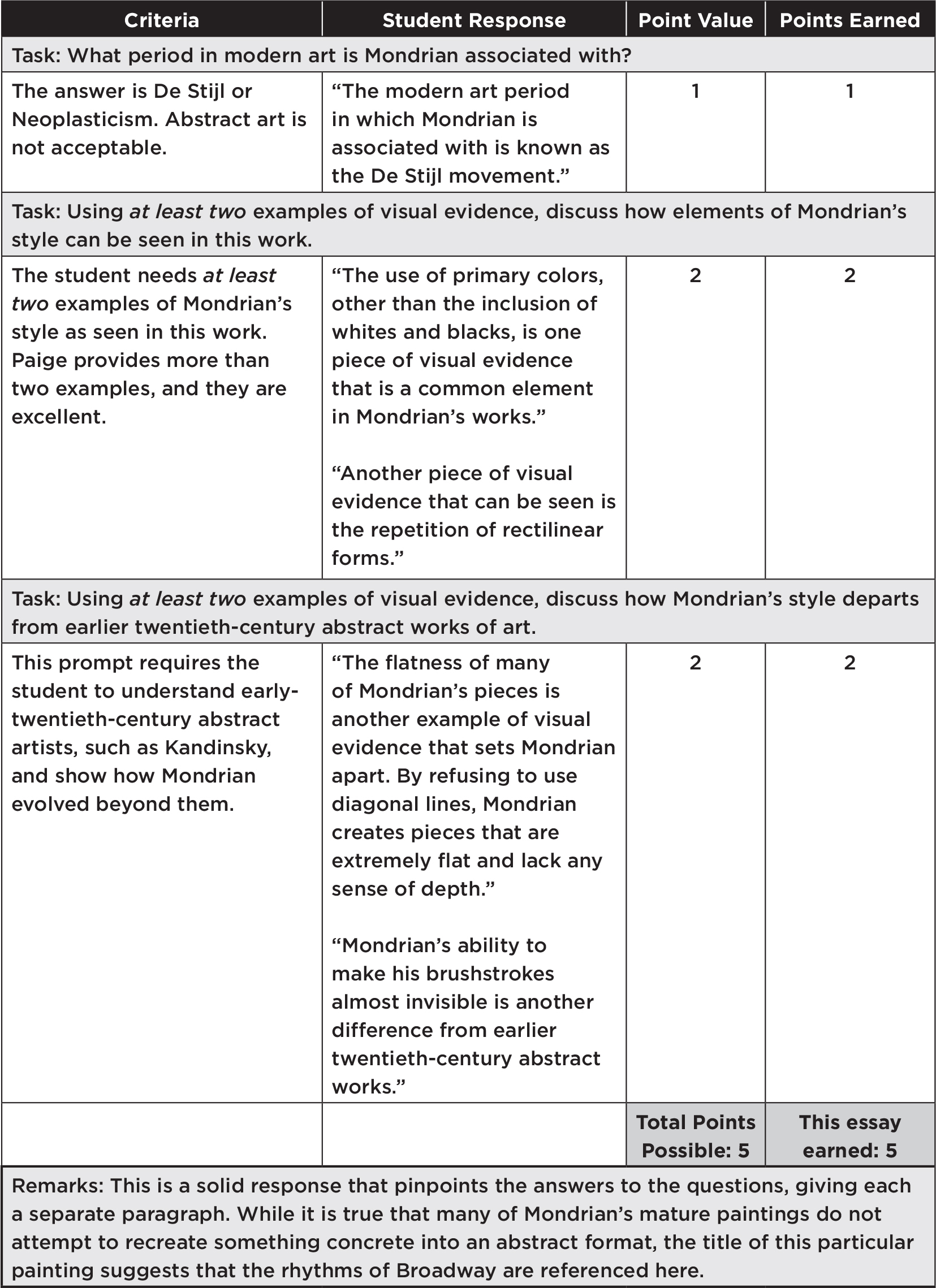
MODEL RESPONSE FOR QUESTION 4
In the early sixteenth century, during the Protestant Reformation, masses of people abandoned the Catholic Church. As an early response, Popes were passive to this movement. Yet, when Pope Paul III was elected, he recognized this alarming trend and commenced the Catholic Church’s responding movement: the Catholic Counter Reformation. Knowing the church needed to foster participation, Pope Paul III, with the help of the Council of Trent, opted to promote art and architecture which galvanized emotion into viewers, while fostering more direct participation in the church. Il Gesu was then built to serve as the mother church for the Jesuits, a new order established by Ignatius of Loyola. Thus, the purpose of Il Gesu, in addition to serving as the mother church for the Jesuits, is to rouse emotion in its viewers while giving people a direct view of the altar to bring more people back into the Catholic Church.
Il Gesu’s purpose to inspire emotion and for all people to have a direct view of the altar influenced its building in many ways. The facade, designed by Della Porta, contributes to this purpose. Because the facade is symmetrical around the portal, viewers’ eyes are drawn to the center, which is where the altar is upon entrance. Also around the focal point are components, such as the broken triangular pediment, the arched window, and the Farnese family crest, that drive the viewers eyes upward towards the top. In addition, the facade projects out into the viewers space as it goes from the outer edges to the focal point, which draws viewers to it. On the interior, Il Gesu holds a large, open space where the entire congregation could gather as they view the altar and rituals without impediment. Il Gesu is comprised of one single, open nave lined with side chapels, without the interruption of aisles. Furthermore, lines on the cornices and the floor all taper towards the domed altar, which further captures the viewer’s attention, all the while promoting drama and emotion.
Il Gesu’s ceiling fresco reflects its purpose of promoting emotion and drama while encouraging people to return to the Catholic Church. Because this fresco is done in “di sotto in su” perspective, it gave viewers a realistic vision of looking up into heaven. In this fresco, Gaulli employs several methods that enhance its thespian nature. The gilded coffered wooden architectural ornamentation frames the space for the fresco, which gives the illusion of looking up into heaven. Unpainted and painted stucco sculptures overlay the edge of the fresco and peek into the viewer’s area. Gaulli glazes the ceiling in a dark hue to create the mirage of a shadow from an adjacent cloud. In the fresco, the foreshortened figures create the illusion that they are being viewed from below as they ascend towards heaven. To support the churches goal of bringing people back into the church, the fresco depicts the devout rising towards the heavenly realm, while the impious fall earthward. Thus, the intersection between the viewer and the realistic illusion of heaven, in addition to the contrast between figures ascending and descending, increases the emotional impact on the viewer, thereby emphasizing the power of Catholicism drawing viewers back to the church.
—Owen M.
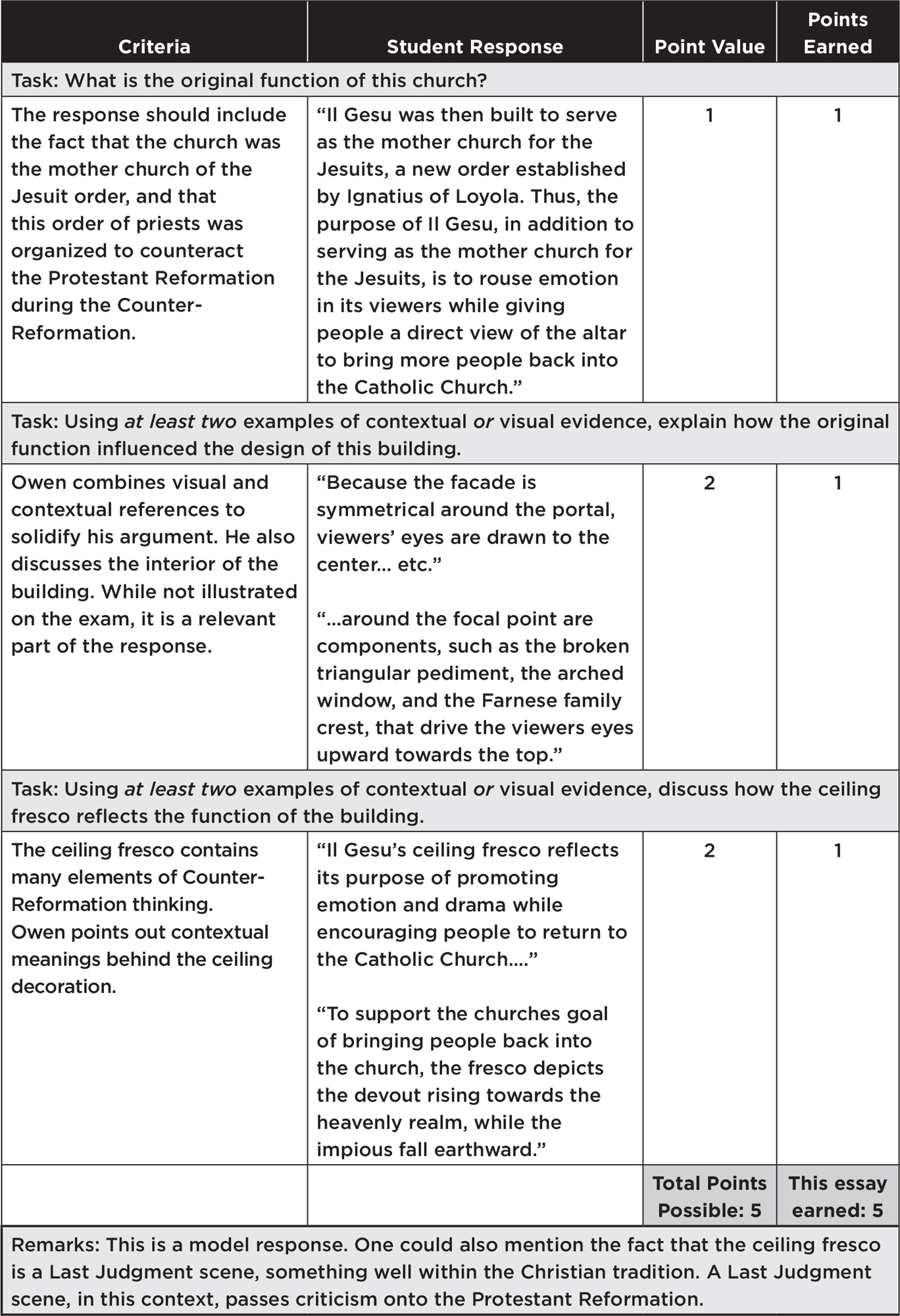
MODEL RESPONSE FOR QUESTION 5
This painting is attributed to Joseph Wright of Derby.
This painting has specific details that are similar in Joseph Wright of Derby’s A Philosopher Gives a Lecture on the Orrery. First, Wright’s use of tenebroso is very specific and dramatic. Both the given painting and the previously mentioned painting are formatted in the way that there are people with their backs to the audience and the light falls on only some of the faces. Also similar are the sharp focus and the closeness of the viewer to the scene. The faces are all individualized and Joseph Wright demonstrates realistic depth and shadowing. Additionally, the subject of the painting itself is incredibly similar from this painting to A Philosopher Gives a Lecture on the Orrery. Both look to be a demonstration or lecture type situation that looks to be science related.
Some specific details that explain why these visual elements are characteristics of the artist and the times in which he lived are first, the subject of the painting. During the time of Enlightenment, Wright depicted inventions of the Industrial Revolution. During the mid to late eighteenth century there was a significant amount of change that was seen in the way that science was now being applied to practical situations. Also, Joseph Wright of Derby was a part of a group called the Lunar Society, which had a goal to raise the status of science and the scientist themselves. The society did this by having a scientist display an experiment. In both the given painting and Philosopher Gives a Lecture on the Orrery, this idea of displaying of knowledge is present, which further explains his use of light and the size of the painting. Joseph Wright of Derby used tenebroso in many of his paintings. He uses the light to demonstrate human intellect and he does this by highlighting the heads of the people. The significance of science is also emphasized by the size of the painting and how inviting the painting is. It elevates the value of science which falls in line with the philosophy of the Lunar Society.
—Leah C.
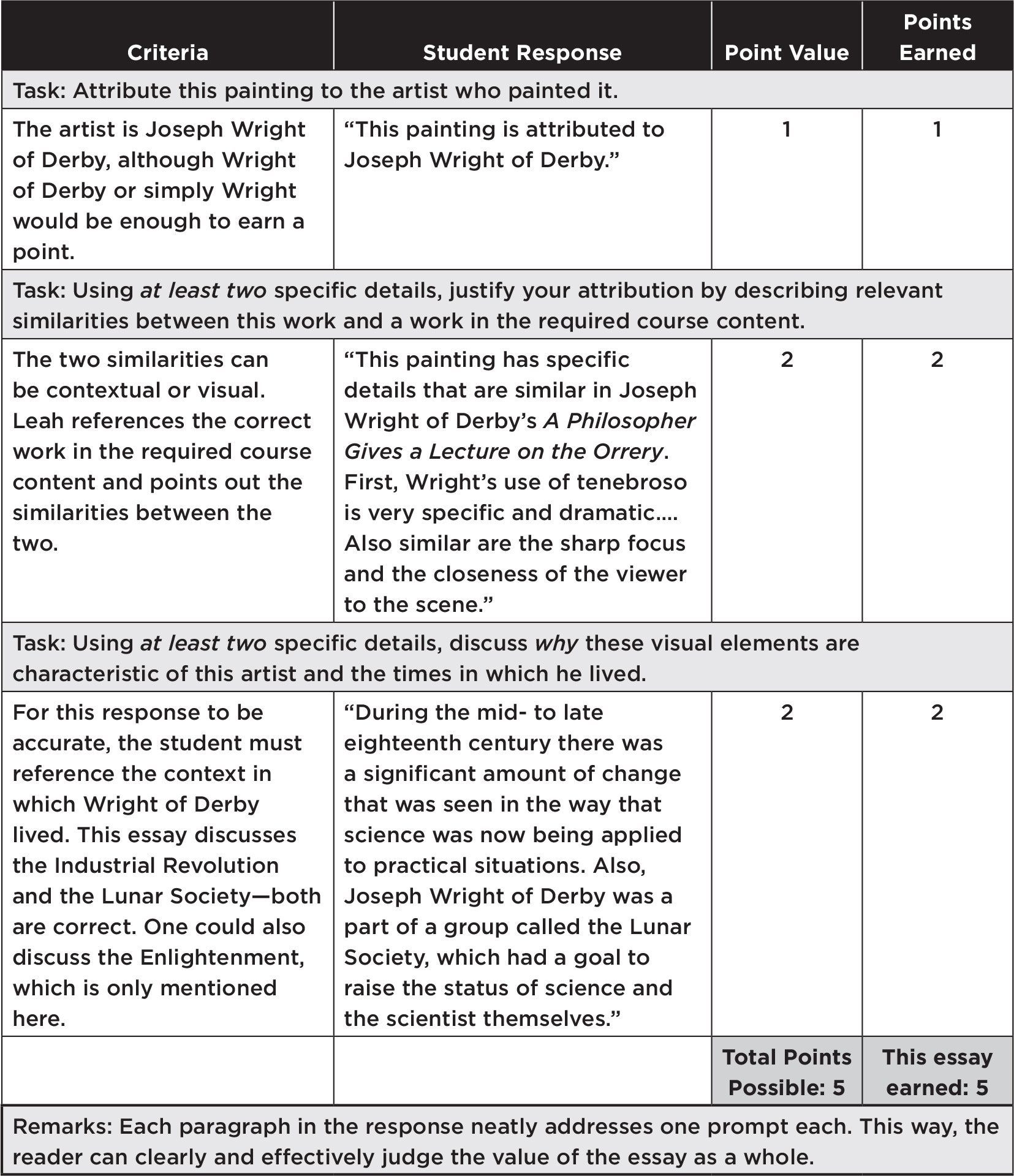
MODEL RESPONSE FOR QUESTION 6
This wall plaque, along with many others, served as a way for the Oba (King) to trace his royal lineage. Each plaque shows a previous Oba, all the way back until the very first Oba. These plaques were hung up in sequence on posts on the veranda of the royal palace. Each plaque shows the power and authority of the Oba along with the many different things that each Oba was known for.
Because this plaque is made of brass, we know that it is very durable and intended to last a long time. The brass medium illustrates the purpose of this plaque as somewhat of a history book that needs to last throughout many years. Also, the use of hierarchical scale and the attendants holding shields over the Oba’s head, show the Oba’s power and importance. Similarly, the Oba is shown wearing royal regalia. The bands shown around the Oba’s neck represent coral necklaces traditionally worn by the Oba to connect them to Olokun, God of the sea, who brought economic prosperity to the Oba people.
In this photograph, the Oba is shown wearing coral necklaces, again, creating a connection between him and the God of the sea. Also, in the photograph the Oba is shown beneath the shields of his royal attendants and in the center of the image. This is the same as is shown in the plaque.
—E.L.

TEST ANALYSIS
NOTE: Because the AP Art History exam has been redesigned, there is no way of knowing exactly how the raw scores on the exams will translate into a 1, 2, 3, 4, or 5. The formula provided below is based on past commonly accepted standards for grading the AP Art History exam. Additionally, the score range corresponding to each grade varies from exam to exam, and thus the ranges provided below are approximate.
SECTION I: MULTIPLE-CHOICE (50% OF GRADE)

SECTION II: ESSAYS (50% OF GRADE)

FINAL SCORE

Final Score Range |
AP Score |
150–200 |
5 |
132–149 |
4 |
110–131 |
3 |
75–109 |
2 |
0–74 |
1 |